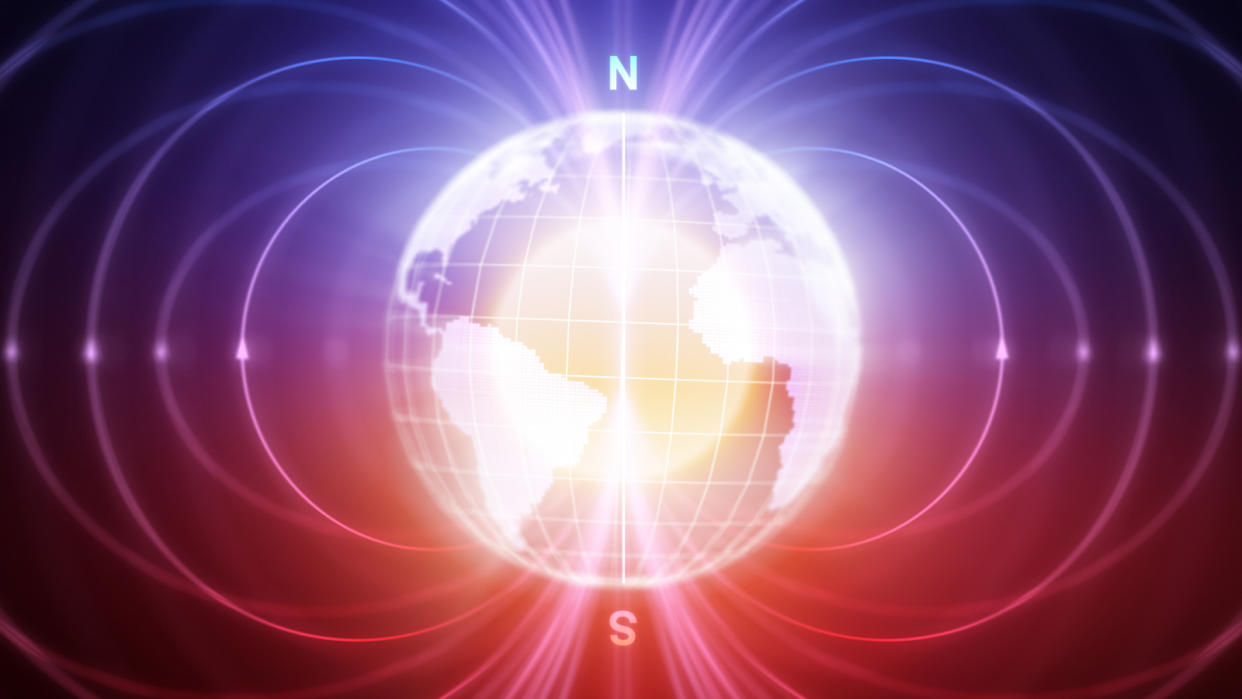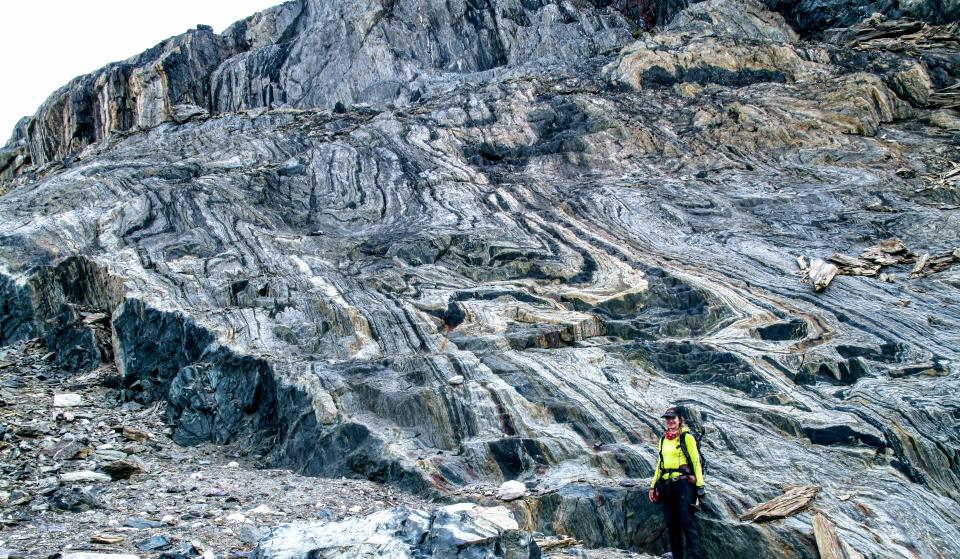Earth's magnetic field formed before the planet's core, study suggests

Earth's magnetic field may have been similarly as strong 3.7 billion years ago as it is today, pushing the earliest date for this planetary protective bubble back 200 million years.
The timing puts the magnetic field in play around the same time life was first emerging on Earth. The oldest fossils on the planet — bacterial mats called stromatolites — date back 3.5 billion years, with some researchers claiming to have found stromatolites as old as 3.7 billion years.
The new study suggests that at that time, the planet had a protective magnetic bubble around it that deflected cosmic radiation and damaging charged particles from the sun.
However, the flow of solar charged particles was much stronger at that time, said Claire Nichols, an Earth scientist at the University of Oxford and lead author of the study, which was published April 24 in the Journal of Geophysical Research. That strong "solar wind" would have stripped away the magnetosphere protecting the planet, meaning Earth was far less shielded than it is today. That finding has implications for the search for alien life.
"When we're looking for life on other planets, having a magnetic field is not necessarily key," Nichols told Live Science. "Because actually, with a much smaller magnetosphere, it still looks like life was able to develop."
The hunt for extraterrestrial life is only one reason to wonder about Earth's magnetic field. Not every planet has a magnetosphere, and researchers aren't quite sure what kicked Earth's into gear. Today, the magnetic field is driven by the churning of the liquid part of the core and the transfer of heat from the solid inner core to the convective outer core as the former cools. But researchers think the core didn't solidify until about a billion years ago.

Nichols and her team went far out of the way to seek out signs of the ancient magnetic field — 93 miles (150 kilometers) inland of Nuuk, Greenland, to a spot on the edge of the ice sheet accessible only by helicopter.
The rocks from this region, called the Isua Supracrustal Belt, are some of the oldest surviving portions of Earth's crust on the planet. They contain iron-rich formations that preserve information about the magnetic field's direction and strength when the rocks formed.
Researchers can also look at folds in the rock caused by later geological upheaval to see if the direction of the magnetic field matches the orientation of the rock. If it doesn't, the magnetic field predates those geological events, for which researchers often know the ages.
RELATED STORIES
—Why does Earth have magnetic poles?
—Strange radio signals detected from Earth-like planet could be a magnetic field necessary for life
—Weird dent in Earth's magnetic field is messing with auroras in the Southern Hemisphere
Using these methods, the researchers found that 3.7 billion years ago, the magnetic field was at least 15 microtesla in strength. That's half the average strength of the magnetic field today. But it's a lower-end estimate, Nichols said, so it's possible that the field back then was around as strong as it is now.
"Whatever is driving the magnetic field in the core was just as powerful before the core was solidified," Nichols said.
The researchers are now interested in delving more deeply into the connections between the ancient magnetic field and Earth's atmosphere. Around 2.5 billion years ago, the atmosphere suddenly experienced a flood of oxygenation. This was partially due to the development of photosynthesis, Nichols said, but the strength of the magnetic field can affect which gases stay within the atmosphere and which ones escape into space.
"I'm really interested to know if the magnetic field has played a role in the evolution of Earth's atmosphere over time," Nichols said.

